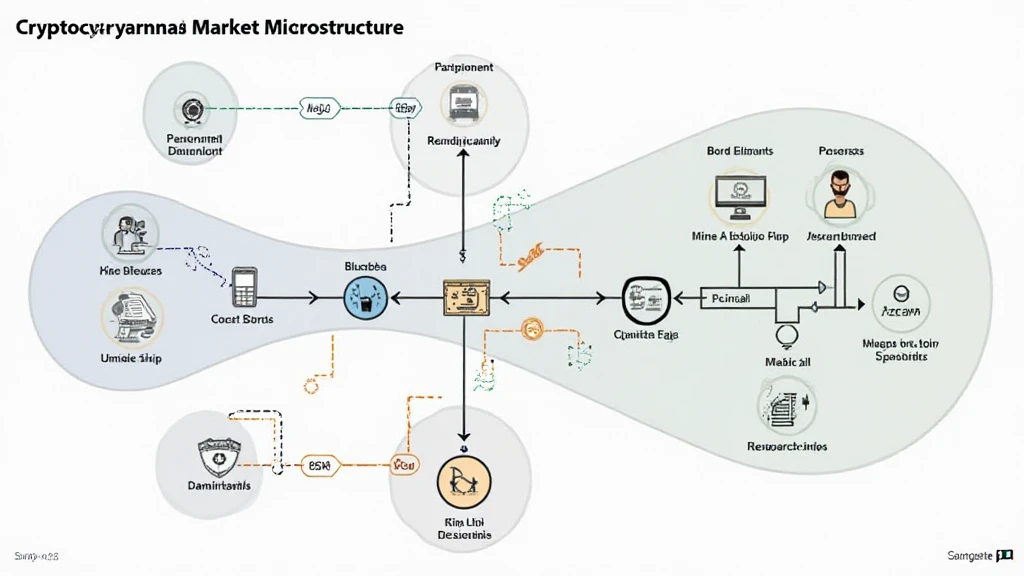Understanding the Cryptocurrency Bond Market Microstructure
In a world where digital finance is ever-evolving, the intersection of traditional financial concepts with blockchain technology has led to the emergence of innovative products. One such product is the cryptocurrency bond, which serves as a bridge between conventional debt instruments and the vibrant, decentralized world of cryptocurrencies. With the potential to reshape the investment landscape, understanding the cryptocurrency bond market microstructure is essential for both seasoned investors and newcomers alike.
According to recent data, the total value locked in decentralized finance (DeFi) has reached unprecedented heights, with over $80 billion at stake in various protocols as of 2023. This presents immense opportunities, but also risks that must be navigated carefully. In this article, we will delve deep into the nuances of the cryptocurrency bond market microstructure, exploring its components, implications, and future prospects.
What is Cryptocurrency Bond Market Microstructure?
When we refer to cryptocurrency bond market microstructure, we are discussing the complex framework that dictates how cryptocurrency bonds are issued, traded, and settled within the broader digital asset ecosystem. This microstructure encompasses various elements:

- Market Participants: This includes issuers, underwriters, investors, and regulatory bodies.
- Trade Mechanisms: The platforms and protocols through which bonds are traded, including decentralized exchanges (DEXs) and over-the-counter (OTC) markets.
- Liquidity: The availability of capital for trading bonds, which can significantly impact pricing and market depth.
- Settlement Processes: How transactions are finalized and recorded on the blockchain.
Key Components of the Cryptocurrency Bond Market Microstructure
To gain a comprehensive understanding of the cryptocurrency bond market, it’s crucial to examine its key components:
1. Market Participants
In the world of cryptocurrency bonds, various players are involved. Issuers typically include companies and projects seeking to raise funds, while investors may range from institutional players to individual enthusiasts. Each type of participant plays a distinct role:
- Issuers: They are responsible for creating and launching bonds, often incorporating unique features like tokenization for added transparency.
- Investors: Their motivation can vary, with some seeking high returns while others prioritize ethical or sustainable investments.
- Regulatory Bodies: These entities ensure compliance with financial laws and provide a framework within which market participants must operate.
2. Trading Mechanisms
Cryptocurrency bonds can be traded through various mechanisms, affecting their accessibility and liquidity. Here’s a breakdown of the common trading platforms:
- Decentralized Exchanges (DEXs): These allow for peer-to-peer trading of bonds without intermediaries, offering greater security but varying liquidity levels.
- Over-the-Counter (OTC) Markets: These facilitate direct trading between parties, typically used for larger transactions, which may enhance privacy.
- Centralized Exchanges: Established platforms that may also list cryptocurrency bonds, providing higher liquidity but often with regulatory oversight.
3. Liquidity in the Cryptocurrency Bond Market
Liquidity is a critical factor affecting the performance of cryptocurrency bonds. It reflects how easily bonds can be bought or sold without influencing their market price. Several factors impact liquidity:
- Market Depth: A higher number of buy and sell orders at various price levels can increase liquidity.
- Investor Interest: The growth of the cryptocurrency user base in regions like Vietnam, where user growth has surged over 200% in recent years, can positively influence liquidity.
- Regulatory Clarity: Markets with clearer regulations often see increased investment, enhancing liquidity.
4. Settlement Processes
The efficiency of settlement processes is paramount in the cryptocurrency bond market. Blockchain technology provides a transparent and tamper-proof record of transactions, but challenges remain:
- Speed: Unlike traditional bonds, which may take days to settle, blockchain transactions can be nearly instantaneous, depending on network congestion.
- Finality: The irreversible nature of blockchain transactions offers a unique advantage, reducing risks associated with counterparty defaults.
Challenges in Cryptocurrency Bond Market Microstructure
While the potential of cryptocurrency bonds is considerable, several challenges remain:
1. Regulatory Uncertainty
The regulatory landscape for cryptocurrency bonds is still evolving. Different countries have approached the issue with various degrees of acceptance and legislation. For instance, in Vietnam, local regulations are still adapting to accommodate the rise of such financial instruments. This uncertainty can hinder investments and create barriers for market participants.
2. Market Volatility
Cryptocurrency markets are notorious for their volatility. This characteristic can make it difficult for investors to gauge the true value of cryptocurrency bonds, leading to price discrepancies and increased risk. To navigate this, investors should adopt risk management strategies that account for potential fluctuations.
3. Lack of Standardization
The absence of standardized practices in the issuance and trading of cryptocurrency bonds can lead to confusion and mistrust among investors. Standardized protocols can enhance transparency, making it easier for investors to make informed decisions.
The Future of Cryptocurrency Bonds
As the cryptocurrency landscape continues to mature, the future of cryptocurrency bonds looks promising. Innovations such as asset tokenization and integration with traditional finance systems are paving the way for more streamlined processes. We can expect:
- Enhanced Regulatory Frameworks: Improved regulations may facilitate broader adoption of cryptocurrency bonds, providing more security for investors.
- Increased Market Participation: Growing interest from institutional investors and the maturation of cryptocurrency ecosystems can boost the cryptocurrency bond market.
- Development of New Financial Products: Innovations in fintech will likely lead to the creation of novel instruments based on cryptocurrency bonds.
Conclusion
Understanding the complex cryptocurrency bond market microstructure is vital for anyone looking to invest or participate in this evolving financial landscape. As we move forward, these bonds hold significant potential to bridge the gap between traditional and digital assets. The convergence of these two worlds could lead to increased investment opportunities and foster a more inclusive financial ecosystem.
As technology enhances the efficiency and transparency of transactions, and as regulations evolve, the landscape for cryptocurrency bonds will likely become more defined and accessible. For investors, staying informed and adaptable is key to navigating this dynamic market.
For more insights on cryptocurrency trends and investment strategies, stay tuned to cryptocoinnewstoday.
Image Description: A graphical representation of the cryptocurrency bond market microstructure, featuring market participants, trade mechanisms, and liquidity factors.





